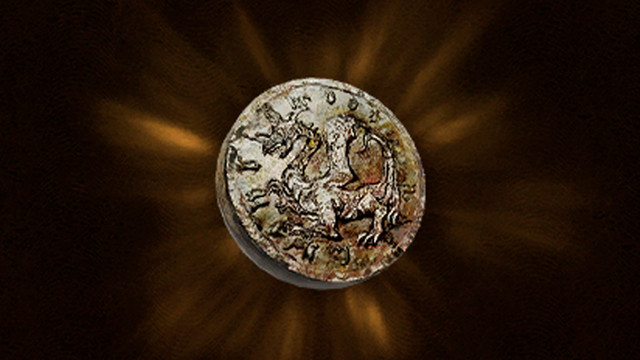A hidden blade in the crowd was, from the very start, the core fantasy of Assassin’s Creed. Across 16 years of iteration and innovation it has remained the series’ soul. Despite the focus drifting into an action-oriented design, a silent kill using that iconic retractable wrist blade has always been its crown jewel. Even Valhalla’s Eivor, a viking warrior, uses the hidden blade. But it’s no secret that stealth in Assassin’s Creed is not what it used to be, and that’s what made Mirage such an enticing prospect: a chance to get back to what Assassin’s Creed was made for.
Mirage did just that. But it perhaps took the mission brief a little too literally. Rather than embrace modern stealth design and make a sneaky Assassin’s Creed for the current day, developer Ubisoft Bordeaux has crafted a throwback to the earliest days of the series. It’s a cute idea to celebrate (last year’s) 15th anniversary, but it also makes for a game that feels stuck in the past. With renewed focus, though, Mirage’s flaws could become the foundations for an exciting new era.
Assassin’s Creed has always had an unusual relationship with stealth. Patrice Désilets, the series’ creator, largely ignored the rules established by genre titans like Thief, Metal Gear Solid, and Ubisoft’s own Splinter Cell. Observing and manipulating guard patrols was barely a concern, not least because protagonist Altaïr had no tools with which to distract enemies with. Instead, Désilets was more interested in social stealth; becoming invisible by blending into the crowd. By hiding among regular people Altaïr could eavesdrop on informants, tail targets, and pickpocket important items. He could even kill someone in the street and melt away unseen. Well, at least in theory.
In practice, Assassin’s Creed’s social stealth never lived up to its potential. Silent kills were fiddly to execute and typically devolved into messy sword fights that spiralled out into the streets. It was a frustrating challenge to disappear into the masses because Altaïr could only hide among groups of hooded scholars, which were rarely there when you needed them.
The problems with Assassin’s Creed’s odd stealth formula would be gradually fixed over subsequent years, though. The series evolved, starting with Assassin’s Creed 2’s expanded number of social deception techniques. By Black Flag, Ubisoft had incorporated more of the natural world into the series, and so you could hide not just among people but tall grass and shrubbery, too. Mirage takes those learnings back to a game with the original’s flavour. New protagonist Basim can distract enemies with noisemakers and smoke. He can blend in with any group of people, regardless of their clothing. In many ways, Mirage feels like a ‘fixed’ version of the original Assassin’s Creed.
But while Mirage patches up and smooths out the original game’s stealth imperfections, it never feels like it actually achieves that original promise. It’s still not really a social stealth game. You may occasionally sit on a bench to eavesdrop, or hide amongst a crowd to evade a chasing guard, but this is for the most part a relatively traditional stealth game. This is never more clear than during the two missions in which Basim can don disguises. They come closer to true social stealth than Assassin’s Creed has ever come before, but this closeness highlights the gulf between its ambition and its reality. Unlike in the Hitman games, there are no interesting mechanics in its costume gameplay. There’s not a hierarchy of enemies who can either be fooled or see through your disguise, and thus no risk/reward challenge. Costumes simply act as a key to a locked door.
Ubisoft rightly stripped Assassin’s Creed back for Mirage. Even as a fan of the series’ RPG era, there’s no denying that Odyssey and Valhalla were over-designed, over-scoped, and over-bloated. But in Mirage’s often anaemic-feeling mechanics we can see that Ubisoft went too far in its cutbacks. It’s not just the social stealth that’s lacking; there’s no challenge in the positioning and patrol patterns of enemies, which makes silently eliminating entire camps a relaxing doddle. There’s rarely any need to worry about the mess of corpses you leave behind because guard patrols never seem to overlap, and so upgrades like the throwing knives that turn corpses to ash have their importance neutered.
Simply put, as a stealth game Mirage is just too streamlined. Environmental hazards like spice bags which can be detonated into clouds of blinding smoke, or chandeliers that can be dropped onto unsuspecting brutes add welcome variety, but often the simple encounter design meant I had to overcomplicate my kills to involve them. When almost every guard patrol is just two foes surrounded by a whole lot of open space, it’s almost always more effective to just throw a knife at the first and then stab the second with the hidden blade. Rinse and repeat.
Basim’s growing arsenal of equipment does provide options, and there’s an interesting challenge to be found in setting yourself non-lethal parameters. Your smoke bombs, sleep darts, and knock-out traps can all aid a pacifist playthrough… but there’s no justification for this in either the fiction or the mechanics. You’re a proto-Assassin, and so killing is your business, and guards are not considered innocent. Why would Basim hold his blade? And there’s nothing to encourage holding back on the violence. While there’s a notoriety system that sends out increasingly challenging enemies should you be spotted with blood on your hands, escaping those foes is so trivially easy that it’s not an effective curtail. The choice between lethal and non lethal is a self-imposed challenge, then, rather than an interesting systemic wrinkle.
All of this is not to say that what is in Mirage is bad. Far from it. But its slender systems and mechanics always feel like the first page of the design document rather than the full height of its ambition. They constantly highlighted to me how advanced the stealth genre has become over the course of Assassin’s Creed’s lifespan, and how Ubisoft has largely ignored those developments. Mirage has none of the clever pathway and inspired environment design of Dishonored. None of Metal Gear Solid 5’s innovations in sandbox or equipment design. There’s not even the interesting interplay between light and shadow of Ubisoft’s own Splinter Cell: Blacklist (although Mirage does steal its auto-kill Mark and Execute system, which is arguably a ‘skip the stealth’ mechanic.)
But the area where Mirage really shows its stealth limitations is in its ‘Black Box’ missions; the story’s five tentpole assassinations. Each takes place in a large themed environment and has a number of ‘opportunities’ that must be discovered and completed in order to track down your target. They are Mirage’s most involving, immersive quests and the highlights of its campaign. And on the surface they sound like Ubisoft’s answer to Hitman’s World of Assassination design, in which every level is full to bursting with different approaches. In reality, these missions only offer the illusion of choice. They’re simply a checklist of activities that must be completed before a room with the villain in can be unlocked, with only minor variation in how that is achieved. And so these missions are bittersweet; the pinnacle of Mirage’s design, but a reminder of just how much better it could be.
Long-term Assassin’s Creed fans will recognise the ghost of Unity in these missions, the under-appreciated Parisian romp that marked the series’ stealth highpoint. But there’s another, less obvious touchpoint: the game where it all began. In the original Assassin’s Creed every kill was preceded by a series of methodical steps. Activate a synchronization point; pickpocket a guard; chat to an informer; eavesdrop on a source; prepare for the kill. And so, through its predetermined steps before the assassination itself, Mirage’s most advanced missions replicate the loop of Assassin’s Creed’s most primitive game. It’s a fun way to celebrate that past, but this design veers so close to Hitman’s opportunity-filled level design that Mirage’s best can’t help but live in the shadow of better games.
As it stands, Mirage is a good reminder that the bones of Assassin’s Creed are still relevant. That stealth template is fun even when stripped back to its very basics. But looking back to the past isn’t good enough for anything more than a nostalgia play. The original ambitions of Assassin’s Creed are worth following through on, and Ubisoft needs to learn from the 16 years of concurrent stealth design if it is to realise the series’ stealth potential. Because the likes of Hitman’s deep disguise systems and opportunity design, combined with Ubisoft’s own novel approach to parkour-led mapping and historical toolset, is the recipe for an Assassin’s Creed fit for the future. Until then, though, we’ll just have to relive the past.
Matt Purslow is IGN's UK News and Features Editor.








